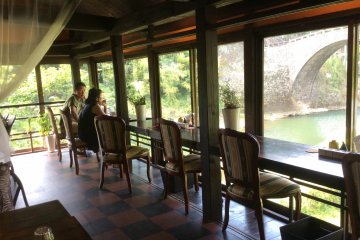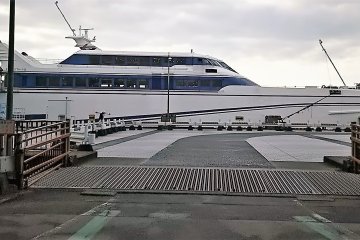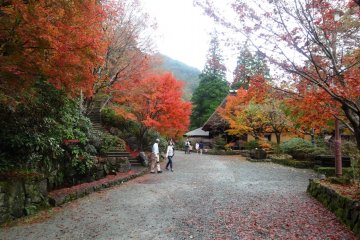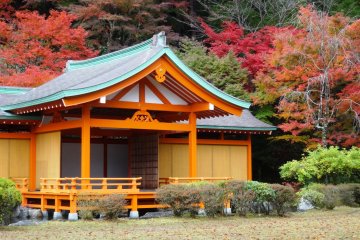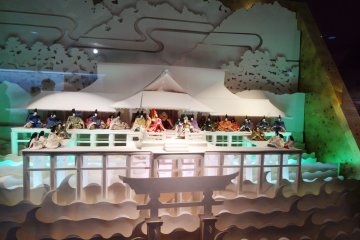In 1185, in the waters off the coast of Shimonoseki in western Japan, a great battle was fought by Japan's two major clans. By the time the day was over, the Minamoto (also known as the Genji) had emerged victorious. Their rivals, the Taira (also called the Heike), fled for their lives. Remnants of this once powerful Kyoto-based clan scattered to the far corners of Japan in search of a refuge from the vindictive victors. A number of the Taira ended up in southern Kumamoto prefecture in the thickly forested mountains of the Gokanosho region.
Gokanosho actually means five villages, a name that was taken from the five small communities the Taira survivors founded. There are still descendants of the Taira clan living in Gokanosho and the five villages remain, at least in some form. However, it can be difficult for the casual visitor to learn more about this secret refuge of one of Japan's ancient families. Hence the creation of the Heike no Sato folk village.
Heike no Sato is a small folk park, consisting of a few thatched roof buildings, a performance stage built to resemble a shrine and a small museum. The museum showcases the story of the Taira clan - their life in Kyoto, their feud with the Genji, the Battle of Dan-no-ura and their subsequent flight to Gokanosho. Sadly, none of the information there is presented in English but the beautiful wood and paper cut-outs at least do a bit to visually relay the Heike's story. The nearby stage holds occasional performances of kagura, a sacred dance related to the native Japanese religion of Shinto, as well as retellings of the Heike Monogatari (the Story of the Heike).
There is a small onsite restaurant that serves local specialties (mushroom season is a particularly enjoyable time to be in the region). Both set meals and a la carte options are available.
Perhaps the best time to visit Heike no Sato is during the autumn, when the village's many maple trees turn fiery red. In more accessible areas of Japan, a place as stunning as this in the fall would be mobbed. However, Gokanosho's extremely narrow roads ensure that the number of photographers is limited and the village never feels crowded.
Gokanosho is accessible mostly via private transportation only. On the first two Sundays of November, a one-way road system is put in place to help ease the circulation of traffic in the height of autumn's leaf peeping season.



